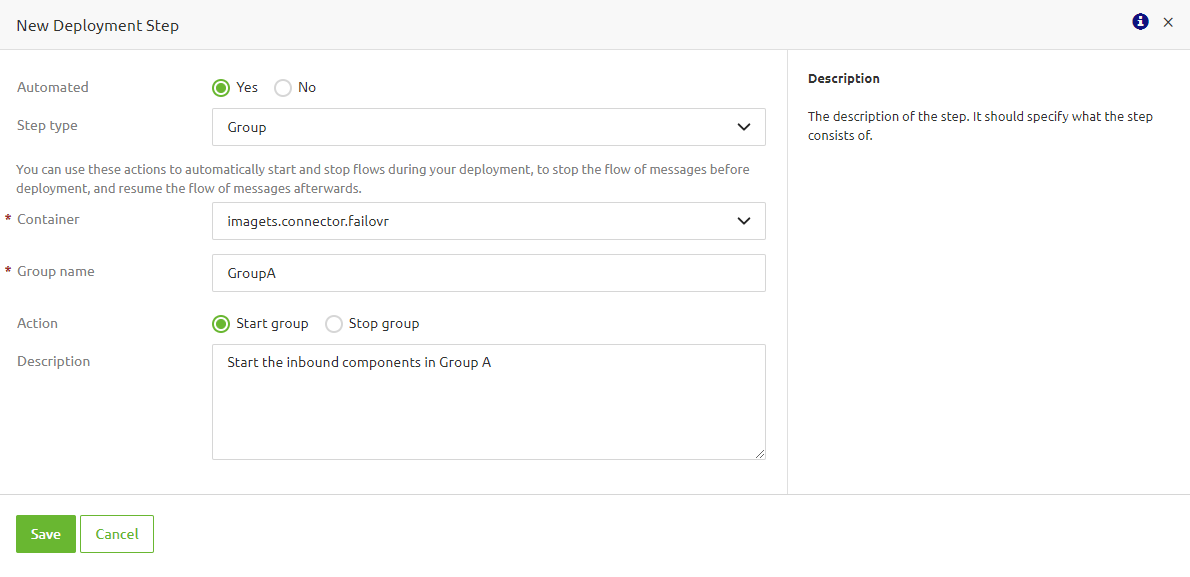Grouping - Deploy Possibilities
eMagiz flows, or more specifically, the flow's inbound component(s), can be grouped. Configuring this is explained here. This functionality is mainly beneficial when faced with substantial maintenance or outage of systems connected to your eMagiz model.
Building on this functionality, you can even configure the group to run in an active/passive failover mode when you activate the multiple runtimes option on your runtime, and each separate runtime is deployed on another machine. The failover functionality is relevant not only in cases of server maintenance but also in that it can assist you when you want to exchange data with a system that allows only one active connection. Should this connection be business-critical, you can use this failover functionality to create a passive failover situation that will take over when the active connection breaks down (regardless of the reason).
This microlearning will focus on configuring the deployment plan to control various inbound components in a typical group and failover configuration.
If you have any questions, please contact academy@emagiz.com.
1. Prerequisites
- Intermediate knowledge of the eMagiz platform
2. Key concepts
This microlearning describes how to configure (parts of) your deployment plan to set up the grouping and, if needed, the failover functionality. The grouping functionality is relevant when faced with maintenance and outages of systems connected to your model. The failover functionality assists and allows you to have a fallback option on an active connection.
3. Deploy Possibilities
3.1. Group Deployment Step
To configure a Group deployment step, add a new one and choose Step type "Group". More information is required to configure the step. A container should be selected for which the inbounds will be stopped. The second requirement is the exact name of the group that should be affected by the deployment step. An action should be picked for the selected group. The options for a "Group" deployment step are to start or stop the inbound components within the group. Optionally, a description can be added.

4. Key takeaways
- Grouping is beneficial when external systems go through maintenance or downtime.
- Failover can have the additional benefit of having a fallback scenario while still adhering to the requirement that there can only be one active connection at a time.
- The role naming in both grouping and failover is crucial. The group name needs to match exactly to make it work.
- You can control group and failover steps from the deployment plan.
- Container inbounds can have a different failover status.
5. Suggested Additional Readings
If you are interested in this topic and want more information, please read the help text provided by eMagiz and check out these links:
